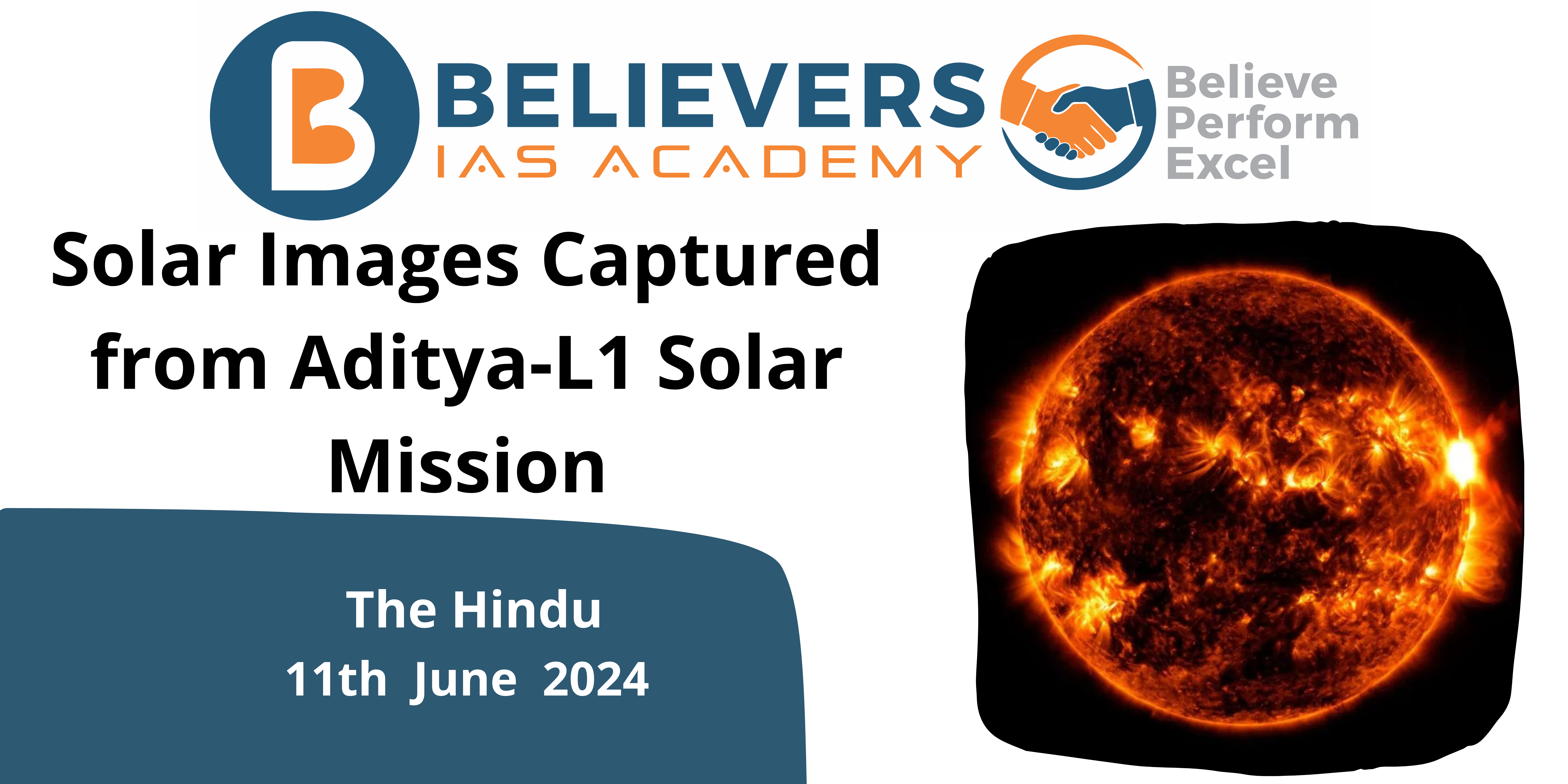Solar Images Captured from Aditya-L1 Solar Mission
Context:
Two remote sensing payloads, SUIT and VELC, aboard India’s Aditya-L1 mission, captured images of the sun and its activities during a solar storm in May
- SUIT and VELC began capturing data on May 14, with SUIT taking six images at different wavelengths on May 17.
Relevance:
GS-03 (Science and technology)
Key Highlights:
- The captured images will help study solar flares, energy distribution, sunspots, space weather prediction, and UV radiation across a wide wavelength range.
- The VELC payload conducted spectroscopic observations, and raster scans of the solar corona were performed on May 14.
- Other payloads, SoLEXS, HEL1OS, ASPEX, and MAG, recorded solar events between May 8 and 11 as the mission passed through the sun-earth L1 point.
Aditya-L1:.
- The mission was to focus on solar aspects such as the atmosphere, ultraviolet imaging, solar flares, and magnetic fields.
- This accomplishment aligns with India’s rich history of solar observation, tracing back to the Kodaikanal Solar Observatory established in 1901.
Lagrange Points:
- Lagrange points are celestial sweet spots where gravitational forces between two significant celestial bodies, like the Sun and Earth, create a equilibrium.
- In these regions, a smaller object, like a spacecraft, can effortlessly maintain its orbit with minimal fuel expenditure.
- Five Points, Unique Characteristics: These Lagrange Points, marked L1 through L5, offer distinctive attributes. They facilitate the stable orbit of smaller masses amidst the gravitational dance of two larger celestial entities.
Lagrange Points in the Sun-Earth System:
- L1: Positioned for prime solar observations, L1’s halo orbit allows continuous viewing of the Sun. Currently hosting the Solar and Heliospheric Observatory Satellite (SOHO).
- L2: Strategically placed ‘behind’ Earth, L2 provides an unobstructed view of the broader Universe. The James Webb Space Telescope orbits near L2.
L4 and L5: These points maintain stable positions, forming an equilateral triangle with the larger bodies. Ideal for space observatories studying asteroids.
- While L4 and L5 are stable, L1, L2, and L3 are precarious. Satellites orbiting these points require periodic course corrections to counteract the inherent instability.



